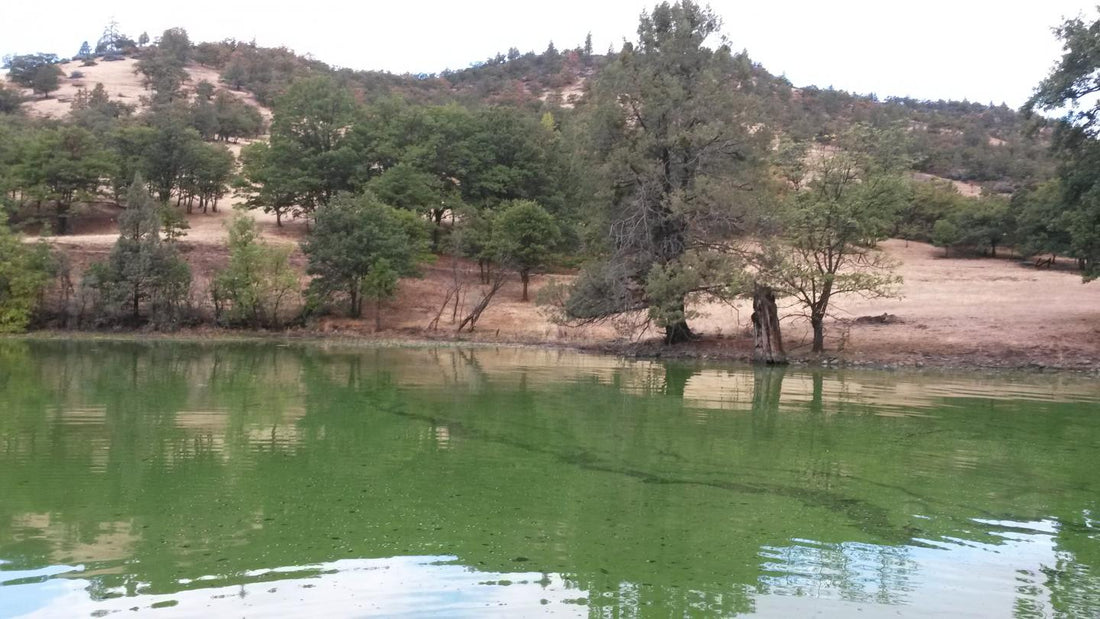
Drinking Water Increasingly Threatened by Toxic Blue-green Algae
By Dan DeBaunShare
A report that was recently published in the journal Current Environmental Health Reports highlights the health threat posed by cyanobacteria, or toxic blue-green algae, to both drinking water and recreational water users across the United States, noting that the risk is increasing due to a number of contributing environmental factors, yet is underappreciated and poorly monitored by water officials.
Update 7/15/2019 - The Berkey filters do remove Microcystin and Cyanotoxins from the water. For information on how the Berkey water filter performs removing this algae, please see Berkey Algae Bloom and Microcystin Removal Testing Results found here.
Contributing Factors
There are several environmental factors that contribute to the formation of toxic algae blooms in both freshwater and marine systems, including warmer temperatures, and higher carbon dioxide and nutrient levels. With temperatures and CO2 levels continuing to rise, together with nutrient loading of freshwater systems due to input from fertilizers, agricultural livestock waste, and wastewater/septic tank systems, rivers, dams, reservoirs and lakes are increasingly prone to toxic algal blooms. This is exacerbated by damming of rivers which accentuates the accumulation of nutrients as it prevents natural flushing of these systems.
According to Oregon State University scientists, there are currently no federal or state drinking water regulations that require drinking water to be tested for cyanobacteria. There is also no testing for disease outbreaks that occur as a result of consuming or coming into contact with contaminated water and they do not need to be reported. However, changes in land use and climate, together with increasingly toxic strains of cyanobacteria emerging, may soon force officials to focus more attention on this health issue. Problems associated with cyanotoxins usually peak in summer, fueled by higher temperatures, as we are currently seeing. The 2015 drought combined with reduced snow pack throughout the western states has resulted in large toxic algal blooms developing earlier than normal. Several rivers and lakes have been affected, including Oregon's Willamette and Klamath Rivers and Upper Klamath Lake -- the latter two have had health warning signs posted. Toxic blue-green algae are common all over the world. A national survey conducted by the EPA in 2007 found microcystin, a liver toxin that is potentially carcinogenic, in a third of all lakes sampled. Some strains of toxic blue-green algae produce neurotoxins which affect the central nervous system, while exposure to most forms can result in a skin rash or gastrointestinal upsets.
Exposure to Toxic Cyanobacteria
Exposure to toxic blue-green algae can be fatal to animals that consume contaminated water or shellfish. Pets and wild animals are often casualties, and on rare occasions, humans are too. Lake Erie is frequently affected by toxic algal blooms, and so too are the communities that depend on it for their water supply. In 2014 the water supply to Toledo, Ohio was temporarily shut off due to an outbreak of blue-green algae in Lake Erie, affecting around half a million inhabitants.
"The biggest health concern with cyanobacteria in sources of drinking water is that there's very little regulatory oversight, and it remains unclear what level of monitoring is being voluntarily conducted by drinking water utilities," said Tim Otten, a postdoctoral scholar in the OSU Department of Microbiology, and lead author on the study. "At this point we only have toxicology data for a handful of these toxins, and even for those it remains unclear what are the effects of chronic, low-dose exposures over a lifetime," Otten said. "We know some of the liver toxins such as microcystin are probable carcinogens, but we've really scratched only the surface with regard to understanding what the health effects may be for the bioactive metabolites produced by these organisms."
How to Ensure Drinking Water is Safe?
Otten suggests that water regulators should heed the "precautionary principle" of protecting human health before damage is done.
"In my mind, these bacteria should be considered guilty until proven innocent, and in drinking water treated as potential pathogens," he said. "I think cyanobacteria should be approached with significant caution, and deserve better monitoring and regulation."
It is not possible to tell just by looking at an algal bloom whether it is toxic or safe, and laboratory testing is too time consuming to make swift decisions to ensure public safety. Unfortunately, until better monitoring becomes mandatory, the only obvious indicator of toxic algal blooms will be illness and/or death of fish, wildlife, livestock and pets that have consumed water that is contaminated. According to Otten, the future looks more promising, with DNA-based methods proving to be quicker and cheaper alternatives to traditional lab-based methods currently in use. The report points out that while modern water treatment facilities do a fairly decent job of rendering drinking water safe for us to drink, the lack of monitoring is problematic in their view. They advise the public not to drink untreated water from any surface freshwater source that could be contaminated with cyanobacteria. They also point out that recreational water users are also vulnerable due to swallowing or inhaling contaminated water while swimming, paddling, fishing, etc. Cyanobacterial toxins cannot be removed by boiling the water. Consumers who have concerns that their drinking water may be contaminated with toxic blue-green algae should look into a drinking water filter for removal.
Update 7/15/2019 - The Berkey filters do remove Microcystin and Cyanotoxins from the water. For information on how the Berkey water filter performs removing this algae, please see Berkey Algae Bloom and Microcystin Removal Testing Results found here.
Journal Reference: Timothy G. Otten, Hans W. Paerl. Health Effects of Toxic Cyanobacteria in U.S. Drinking and Recreational Waters: Our Current Understanding and Proposed Direction. Current Environmental Health Reports, 2015; 2 (1): 75 DOI: 10.1007/s40572-014-0041-9
-
Regular price From $302.00 USDRegular priceUnit price / per
-
Regular price $234.00 USDRegular priceUnit price / per
-
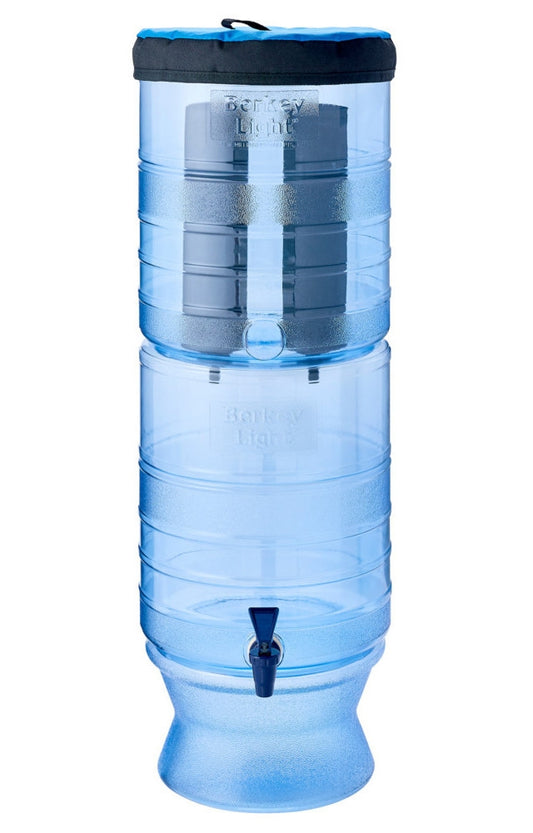
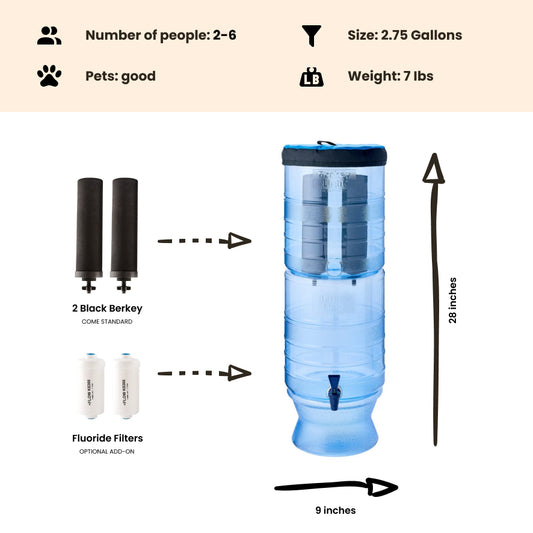 Sold outRegular price From $305.00 USDRegular priceUnit price / per
Sold outRegular price From $305.00 USDRegular priceUnit price / per -
Regular price $327.00 USDRegular priceUnit price / per
-
Regular price From $408.00 USDRegular priceUnit price / per
-
Regular price From $451.00 USDRegular priceUnit price / per
-
Regular price From $478.00 USDRegular priceUnit price / per

Dan DeBaun
Dan DeBaun is the owner and operator of Big Berkey Water Filters. Prior to Berkey, Dan was an asset manager for a major telecommunications company. He graduated from Rutgers with an undergraduate degree in industrial engineering, followed by an MBA in finance from Rutgers as well. Dan enjoys biohacking, exercising, meditation, beach life, and spending time with family and friends.
~ The Owner of Big Berkey Water Filters



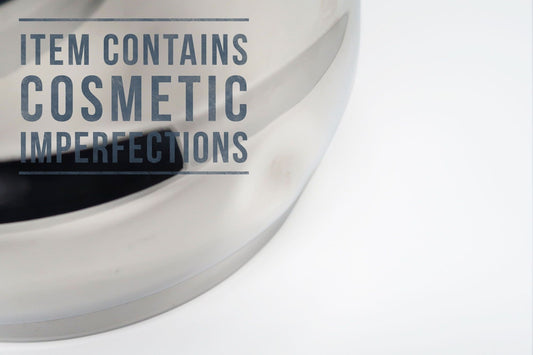






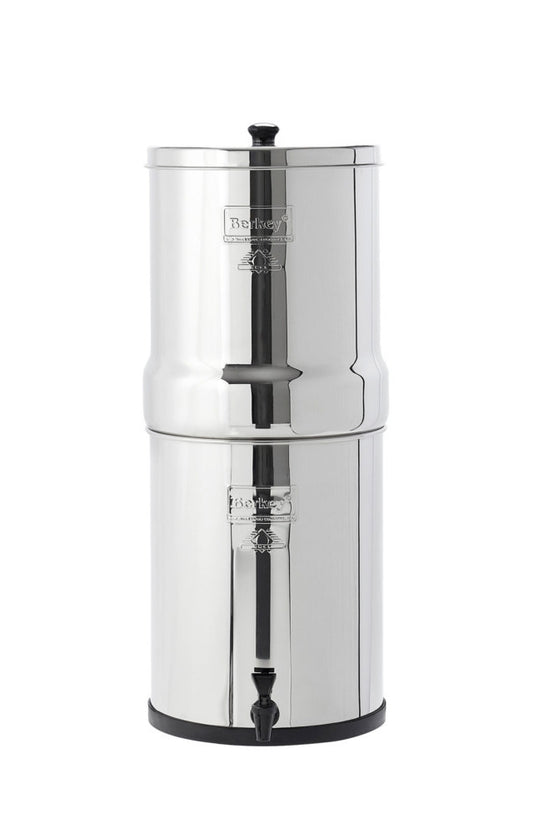
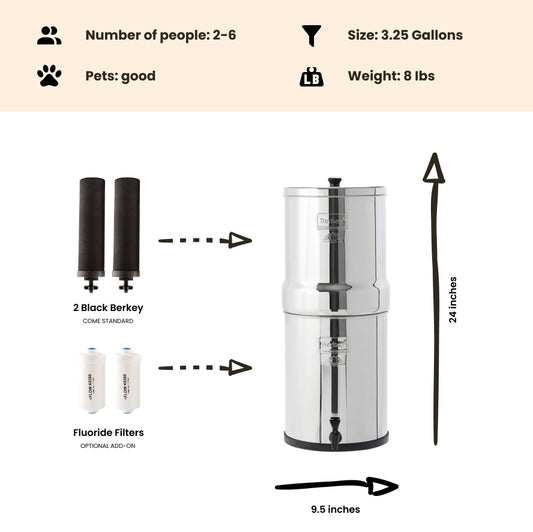





Would Berkey filter get rid of the toxins caused by the Florida green algae?
Hi Marisol -
Please refer to this article for an answer to your question:
https://www.bigberkeywaterfilters.com/blog/microcystin/algae-bloom-and-microcystin-removal-berkey-faq/
Thanks
Dan